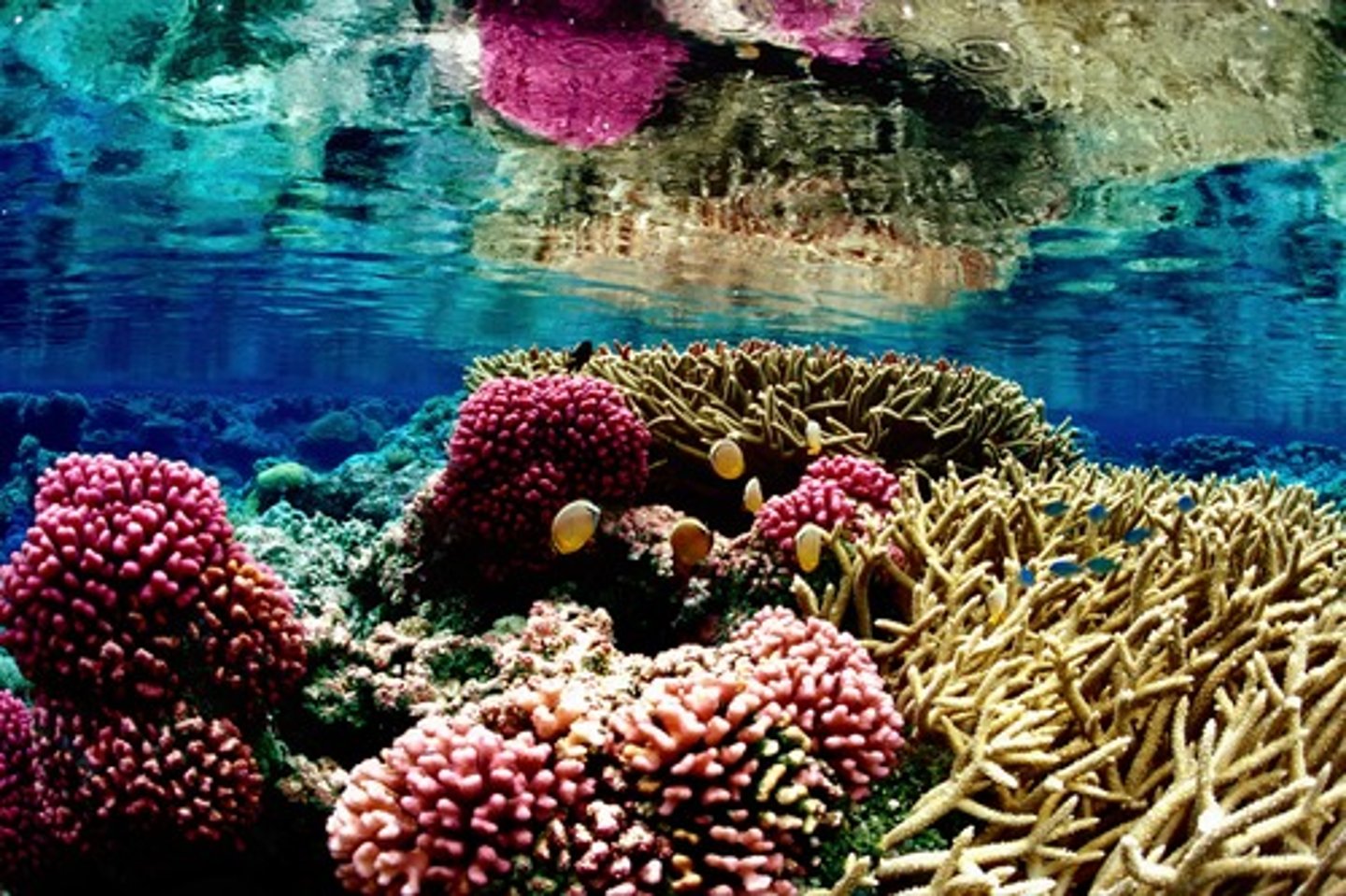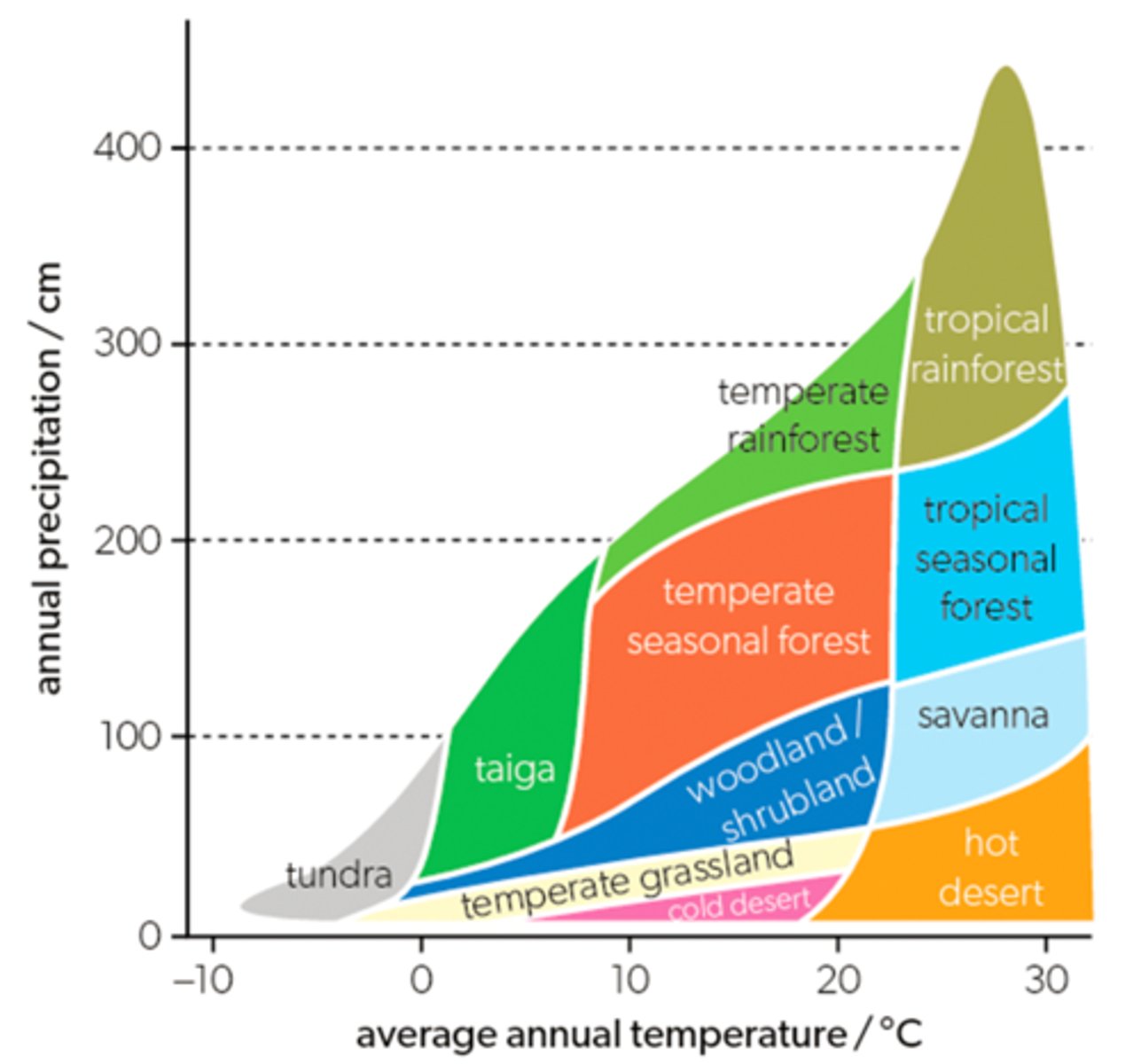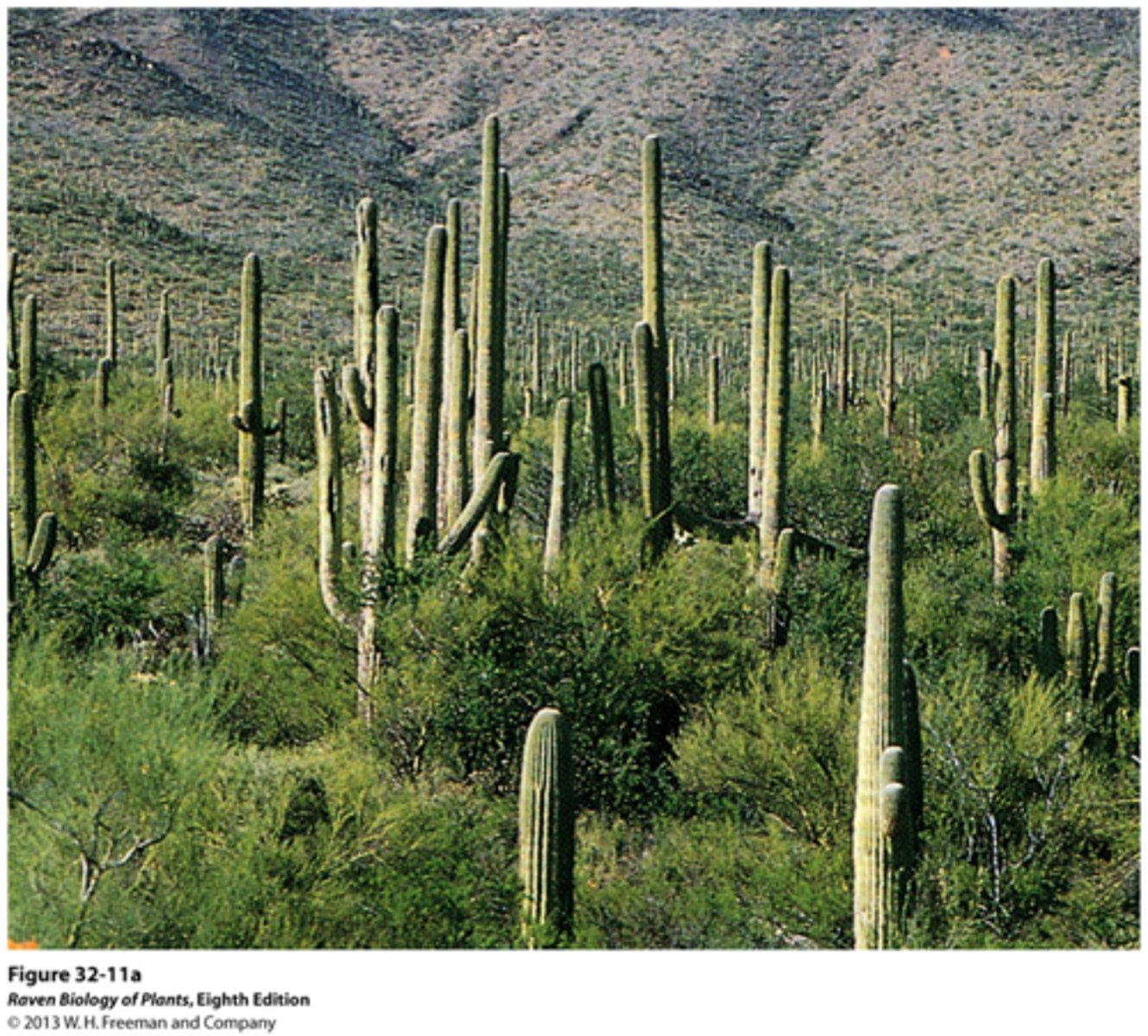IB HL Biology: Adaptation to the environment
1/32
There's no tags or description
Looks like no tags are added yet.
Name | Mastery | Learn | Test | Matching | Spaced |
|---|
No study sessions yet.
33 Terms
What is a habitat?
A place where an organism, community, species, or population lives
How can a habitat be described?
As a geographical location e.g., Brazil, using locational details e.g., tree canopy, and details of the type of ecosystem e.g., rainforest
What is a microhabitat?
a small, specialized habitat within a larger habitat e.g., bark on a tree or shaded area
What are examples of abiotic factors?
- Temperature
- Light
- Humidity
- Water
- Soil nutrients
- Soil pH
- Oxygen and Carbon dioxide levels
What are examples of biotic factors?
- Predators
- Competition
- Pathogens
- Food availability
What are the environmental challenges of sand dunes?
Low water and high salinity and no soil
How is Maram grass adapted to sand dunes?
- Needs little water - xerophyte - and leaves have a reduced surface area to prevent water loss.
- The leaves are rolled so that the stomata are on the inside of the roll therefore if water comes out, it accumulates in the roll - increasing the humidity and preventing more water loss.
- The leaves are waxy - preventing further water loss.
- Marram grass has a network of roots which help to stabilize and hold the sand. Rhizomes can grow outwards - anchorage and colonises sand to create stability.
- accumulation of carbohydrates in root and leaf cells.
What are the environmental challenges of mangrove swamps?
waterlogged anaerobic soils + high salt concentrations.
How are mangrove trees adapted to mangrove swamps?
- Secrete excess salt from glands in leaves
- Root epidermis is coated in cork which reduces permeability to salt.
- Cable roots grow close to the soil surface where there is the most oxygen.
- pneumatophores - vertical root branches growing up into the air which absorb oxygen for use in roots.
- buoyant seeds
- accumulation of mineral ions and carbon compounds o increase osmotic potential of root and leaf cells - water absorption.
- Stilt roots anchor the trees.
How do abiotic variables affect species distribution?
Species have a zone of tolerance (influenced by adaptations) wherein they can withstand certain conditions. Anything outside this zone means the animal will not survive the conditions.
For animals this is often temperature and rainfall - can work out an average.
What is a limiting factor?
An abiotic/bitoic factor which limits the size the population size or presence of an organism in a particular environment.
How can the range of tolerance be calculated?
A transect can be used: line or belt transect. This can involve quadrat sampling. Transect line show the abundance and distribution of a species.
What can be used to measure abiotic factors?
Data loggers - over time. Or light/salinity meters for short-term.
What are coral reefs?
Biodiverse environments which are the result of a mutualistic relationship between the corals which provide protection and zooxanthellae which perform photosynthesis to supply the corals with oxygen for respiration. They are found along the equator.

What are the conditions needed for coral reef formation?
- High in the water so light can penetrate for photosynthesis.
- Clear water (no turbidity) so light can penetrate.
- Salinity to avoid issues with osmosis.
- Warm temperatures for zooxanthellae to photosynthesise and respire.
- pH above 7.8 to allow deposition of calcium carbonate in the coral skeleton (maintain enough to maintain the skeleton). If water is acidic the coral skeleton will begin to dissolve.
What are biomes?
A biome is a large geographical area that contains communities of plants and animals that are adapted to living in that environment.
What are the 2 main abiotic factors which determine terrestrial biomes and their distribution?
- Earth temperature
- Annual rainfall
What is the graph to show the distribution of biomes ?

Why will organisms in an area be morphologically similar but share little genetically?
They evolved due to convergent evolution.
What are the 6 biomes?
- Tropical Rain Forest
- Temperate Forest
- Grasslands
- Desert
- Taiga
- Tundra
What are the abiotic conditions of the tropical rainforest?
- High temperatures
- Minimal seasonal variation
- High precipitation
- High plant biodiversity
What are the abiotic conditions of the temperate forest?
- Medium temperature
- Warm summers, cold winters
- Deciduous broad-leafed trees which lose leaves in the colder seasons
- medium/high rainfall
What are the abiotic conditions of the taiga forests?
- Low temperatures
- Short summers and long cold winters
- Medium/high precipitation
- Evergreen forests dominated by conifer trees.
What are the abiotic conditions of the desert?
- High temperature
- minimal seasonal variation
- very low precipitation
- little vegetation, often spiny leaves adapted for water conservation
What are the abiotic conditions of grasslands?
- high/medium temperatures
- dry and cold seasons
- medium/high precipitation
- grass species, little significant tree growth - lack of water
What are the abiotic conditions of the tundra?
- very low temperature
- short summers and very cold winters
- medium/low precipitation
- No trees because of a lack of water and short growing season.
What conditions do animals need to adapt to in the desert?
- high daytime temps and low at night
- little water availability - low annual rainfall
- limited soil development
- predators and little shelter
What are 2 species with adaptations to deserts?
- The saguaro cactus
- Fennec Fox
What adaptations does the saguaro cactus have to the desert?
- thick waxy skin is waterproof preventing water loss
- covered in bristles to prevent grazing by predators
- single long taproot which that sends it down to retrieve deep water but also a massive shallow root system to absorb occasional rainwater.
- water that is taken up is stored in sponge-like tissue and maintains low water needs until next rainfall.

What adaptations do fennec foxes have to the desert?
- large ears which are highly vascular and help dissipate heat and locate small prey and animals moving underground.
- nocturnal hunters and spend daytime in dens shaded from the sun.
- obtain water from food but will from water source if available.
- kidneys adapted to reabsorb most of the water and rarely urinate (long loop of Henle).
What are 2 species adapted to the tropical rainforest biome?
- poison dart frogs
- kapok tree
What are the adaptations of the kapok tree to the rainforest?
- a strong foundation of buttress roots which extend above the ground - supports it in the soil.
- Kapok trees shed their leaves in the dry season to prevent water loss.
- Some species have spines to protect them from predators as well as act as water reservoirs.
- seeds are covered in fine white hairs which help them disperse in the wind. The huge height of the trees, growing in the canopy, mean the seeds can be dispersed easily.
What are the adaptations of the blue poison dart frog to the rainforest?
- Highly toxic chemicals in skin as a result of diet of poisonous insects.
- bright patterns and colours as warnings to predators.
- sticky tongues help catch food
- have fewer eggs so spawn larger offspring - increased chances of survival.
- sticky skin retains moisture and allows children to stick to adults.